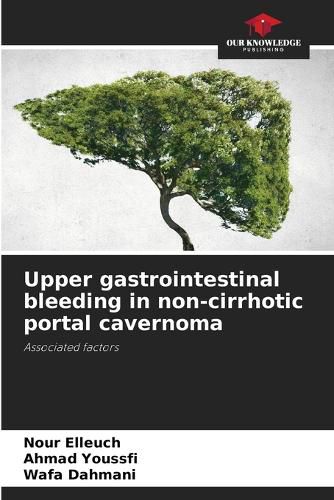Readings Newsletter
Become a Readings Member to make your shopping experience even easier.
Sign in or sign up for free!
You’re not far away from qualifying for FREE standard shipping within Australia
You’ve qualified for FREE standard shipping within Australia
The cart is loading…






This title is printed to order. This book may have been self-published. If so, we cannot guarantee the quality of the content. In the main most books will have gone through the editing process however some may not. We therefore suggest that you be aware of this before ordering this book. If in doubt check either the author or publisher’s details as we are unable to accept any returns unless they are faulty. Please contact us if you have any questions.
The aim of our work was to identify factors associated with the occurrence of digestive haemorrhage due to portal hypertension during non-cirrhotic portal cavernoma in a Tunisian populationOur study colligated 47 patients with non-cirrhotic portal cavernoma. The mean age was 40.7 years, with a sex ratio (male/female) of 0.95.. Oeso-gastro-duodenal endoscopy revealed oesophageal varices in 48.9% of cases and hypertensive gastropathy in 38.2%. 61.7% of patients were prescribed anticoagulation. Specific treatment of underlying diseases was instituted. After an average follow-up of 52 months, half of our patients (50.9%) presented at least one complication, dominated by digestive haemorrhage due to portal hypertension in 34% of cases. In the multivariate analysis, the presence of endoscopic signs of portal hypertension (p=0.002) and the presence of collateral venous circulation on imaging (p=0.014) were independent factors associated with the occurrence of variceal hemorrhage during follow-up. Anticoagulant therapy
$9.00 standard shipping within Australia
FREE standard shipping within Australia for orders over $100.00
Express & International shipping calculated at checkout
Stock availability can be subject to change without notice. We recommend calling the shop or contacting our online team to check availability of low stock items. Please see our Shopping Online page for more details.
This title is printed to order. This book may have been self-published. If so, we cannot guarantee the quality of the content. In the main most books will have gone through the editing process however some may not. We therefore suggest that you be aware of this before ordering this book. If in doubt check either the author or publisher’s details as we are unable to accept any returns unless they are faulty. Please contact us if you have any questions.
The aim of our work was to identify factors associated with the occurrence of digestive haemorrhage due to portal hypertension during non-cirrhotic portal cavernoma in a Tunisian populationOur study colligated 47 patients with non-cirrhotic portal cavernoma. The mean age was 40.7 years, with a sex ratio (male/female) of 0.95.. Oeso-gastro-duodenal endoscopy revealed oesophageal varices in 48.9% of cases and hypertensive gastropathy in 38.2%. 61.7% of patients were prescribed anticoagulation. Specific treatment of underlying diseases was instituted. After an average follow-up of 52 months, half of our patients (50.9%) presented at least one complication, dominated by digestive haemorrhage due to portal hypertension in 34% of cases. In the multivariate analysis, the presence of endoscopic signs of portal hypertension (p=0.002) and the presence of collateral venous circulation on imaging (p=0.014) were independent factors associated with the occurrence of variceal hemorrhage during follow-up. Anticoagulant therapy